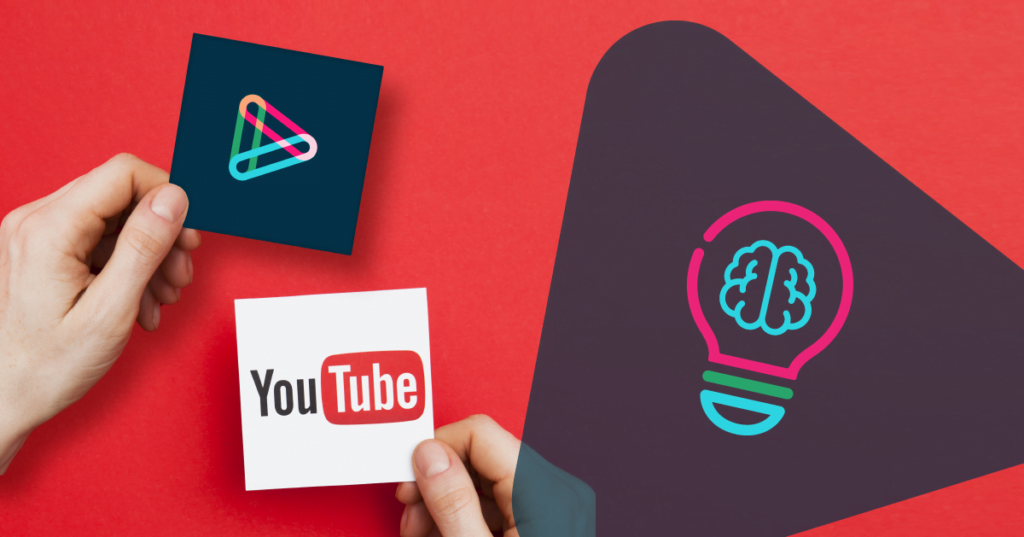Whether you’re looking for a tasty new pasta recipe or a compilation of pandas falling over, YouTube offers it all. Also, a large proportion of YouTube’s video library consists of educational videos. In fact, study shows that more than half of YouTube’s users claim to have watched at least one video for an educational purpose. Take an explanatory or a how-to video on YouTube for example. However, YouTube comes short when it comes to functionalities that improve learning quality and help reach educational goals.
Enhance learning experience
Interactive video adds all kinds of interactive elements which help viewers understand, remember and apply information more effectively. Moreover, interactive educational video is a great medium to make education more enjoyable. This is because the viewer is actively participating in the video rather than sitting back and watching. Which is why we created this list of 10 reasons why interactive video beats YouTube (and other video platforms) for interactive educational videos:
- No unnecessary information
- Prevent information overload
- In depth learning analytics
- Cross media sources
- Pop-up questions
- Adaptive testing
- Integrations with LMS and other learning environments
- No distractions
- Signalling to redirect attention
- Specific sharing options
1. No unnecessary information
Let’s say you’re fixing the flat tire of your bicycle. Everything goes well until you get stuck on the part where you’re placing the new tire on your bike. You don’t want to manually click through a video tutorial in hopes of finding the part that explains this bit of information. You want to immediately reach it without having to waste any time. The interactive video layer helps you with that. With clickable buttons and menus, viewers can choose to skip certain parts of the educational video or jump to the specific information they’re looking for. This also allows them to progress the video at a speed that suits them best.
The online world gets smarter with the day and finding the information you’re looking for in the blink of an eye has almost become the standard. Also, information often has to be repeated multiple times for someone to be able to remember complex knowledge or how to perform a certain task. This makes interactive educational video a great medium for performance support to increase learning efficiency and employee performance.
2. Prevent information overload
An explanation video on YouTube of 10 minutes can already result in an information overload. It can be simply too much to process, especially when the information is all new to the viewer. Interactive educational video opens opportunities for presenting your content the right way to learn efficiently.
By segmenting information into separate parts that are easily accessible and repeatable, the viewer gains control over the knowledge and will have a better understanding of the content. You can do this by adding menus or pause screens. This way the viewers can continue when they are ready for the next bit of information. Or they can choose to repeat the part they just watched if it isn’t entirely clear yet.
3. In depth learning analytics
In hihaho you can see individual viewer statistics, which on YouTube is only possible collectively. For each viewer of your interactive educational video you can check how they answered a question, which options they clicked and whether they watched the whole video or only certain parts of it. YouTube’s statistics of educational videos give a lot of information about demographics and engagement. However, it doesn’t offer any insight on statistics that indicate learning goals.
You can also directly ask the viewers for feedback within your videos. This way you can see if there’s anything you can improve or if there are other subjects they would like to learn about through your videos so you can use that for future videos. The Rating interaction might be useful for this purpose.
4. Cross media sources
A mix of sources in different formats works well to keep variety in learning and maintain focus. Existing sources, such as assignments and web pages with explanations, can be easily integrated with hihaho’s interactive videos. You can even have your viewers submit documents, perhaps for an assignment, through the Form interaction.
5. Pop-up questions
Interactive questions that pause the educational video and give the viewer time to think, have proven to help reach learning goals. Among others, this study shows that students’ test performance was significantly improved when interactive educational video was used instead of methods with written text. Moreover, these students agreed that pop-up questions within educational videos helped them to study more easily at home. They were also generally positive about including more pop-up questions within the educational videos. The Question interaction is convenient for gathering results and testing viewers, which we’ll explain further in the next section.
6. Adaptive testing
Interactive educational videos can be made adaptive to test results. For example, you can have the viewer be redirected to a more in depth explanation of a subject when they answer a question wrong. They will skip this part if they give the right answer. You can also make it so the educational video shows different questions based on answers given to earlier questions. That way you can make a personalized learning experience for all your viewers.
Furthermore, you can perform formative and summative tests directly in the educational video. For summative tests you can decide when the viewer has passed or failed the test. This can be done through many types of questions and the score will be directly visible in your LMS as well as for the attendee.
7. Integrations with LMS and other learning environments
Hihaho videos can be fully integrated in your LMS. There are multiple ways to implement your interactive educational video in your own learning environment. This way you can track learning analytics through your LMS. Whether you’re used to working with SCORM-packages, the Tin Can API (xAPI), or you just want to embed your educational video, there are multiple ways to create this connection.
8. No distractions
As opposed to YouTube, hihaho ensures a video environment that will not distract viewers from their learning goals. For Example, YouTube will recommend videos based on your interests play the occasional ad which might distract the viewer. An interactive educational video in hihaho has no distractions, whether you choose to have people watch the video in our player, embedded on your website or within your LMS.
9. Signalling to redirect attention
Whether it’s online or offline, maintaining overview and focus whilst studying information can be difficult. Using hotspots or highlights, you can easily let the viewer know where to go. This way you can also show them which options they can choose from. A customizable indicator can be used to highlight clickable parts of the educational video.
10. Specific sharing options
Access to hihaho interactive videos can be limited to be specifically watchable by certain people through sharing options. This way you can ensure no one other than the people that are allowed to watch your video can access it. On top of that you can keep track of which people have and have not watched your video yet.
Time to take learning to the next level
YouTube has understandably been the leading online video platform for both entertainment and education. The video editor in YouTube Studio has some convenient editing options for videos. You can trim your video, add sounds and create an end screen for your video. However, it lacks customization options and enhancing features. These are essential for optimizing educational videos for learning purposes.
We think it’s time to say goodbye to YouTube and welcome hihaho for interactive educational videos. With lots of upgrades for your videos hihaho will truly enhance your educational video making and interactive learning experience. This not only makes your videos more appealing, but also more suitable for learning. The interactive video layer in hihaho creates a whole new experience for viewers with questions, menus, buttons and many more interactions. The viewers will be fully immersed in your educational video.
Get started today and make sure to check out our educational licenses to see if they apply to you!





